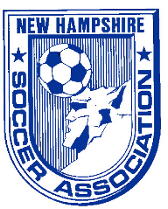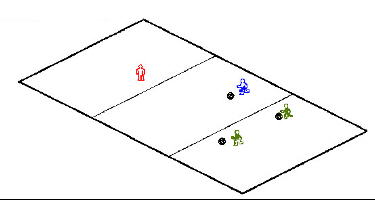
It is imperative that coaches get the parents involved. Not only are they are a major resource for your team, but the U-6 player still views their parents as the most significant people in their lives. A pre-season meeting should be held with the parents so that objectives and team policies can be addressed. Some topics that you may want to address at this meeting are:
As coaches of these younger players there are things that we know that we can expect during training and games. If we know what to expect, we will be more effective in dealing with the hundreds of situations that come up. This will help us relax, and, in turn, allow us to enjoy the unpredictable nature of working with these children even more. Here are some of the things that we can expect.
It is important to understand at the outset that players coming to any sport prior to the age of 6 years old, in general, do not do so by their own choice. As a result, their coaches need to give them something about which to get excited. Further, at this age, learning to play soccer is secondary to most other things in their lives.
With the above assumptions, lets look at some things that we can do to energize the U-6 players, and, hopefully, get them to the point where they will enthusiastically initiate the sign up for next year!
Here are some items that should be included in a U-6 training session:
WARM-UP: A brief warm-up is appropriate in order to get the players thinking about soccer and to prepare them physically for the time ahead. This should involve individual body activities that may or may not involve the ball. They can chase their ball as it is thrown by the coach, bringing it back with different parts of their body. Or, they can chase someone with their ball at their feet. Static stretching is also appropriate at this time, again, hopefully done with the ball. "Soccernastics" activities are very appropriate, like: rolling the ball with the bottom of their feet, with their elbows, backwards, with the back of their neck while holding on to it; throwing it up and catching it; keeping it up with their feet while sitting.
INDIVIDUAL ACTIVITIES: Follow the warm-up with some kind of individual activity, not a real 1 v.1 game, but some kind of activity where players act as individuals in a game environment. An example would be a kind of tag game, or "Red Light - Green Light", or a game where players are trying to knock their ball through gates. Keep players in motion at all times. Avoid having them wait on lines. Play games of "inclusion" instead of games where the "looser sits".
PLAY THE GAME: Move on to the real game, but, make sure it is a 2 v. 2, 3 v. 3, or 4 v. 4 game. Switch the game every 5 minutes or so. Be creative. Play with 4 goals, or 2 balls. Play with or without boundaries. Use cones if you don't have real goals. Keep players involved. Have more than one game going on at a time if necessary. It is important that every player has a chance to shoot on goal as often as possible.
WARM-DOWN & HOMEWORK: Finish the session with a warm down. Give them some more stretches to do with the ball. You may want to review what you started the session with. Also, give them some homework so that they practice on their own. Think of some ball trick that you would like to see them try to do, like, bounce it off their thigh and then catch it. It is important to finish on time. This is especially essential if the players are really into it. Stop at this point and you will get an enthusiastic return.
Here is a game that involves kicking and is a good example of parallel play in that it involves all players on the team at one time, but, they are all acting as individuals during the game. This allows for individual differences in skill. The game is simple, fun, and easy to adapt to account for team size and experience.
THE GAME: Create a 'neutral area' between the two teams where no player is allowed into. This area can be as small as one yard and as big as 10 yards wide. The width is determined by how far the players can kick the ball.
Each player starts with a ball at his / her feet. On command, each team tries to keep their side of the game free of balls by kicking their ball over to the other teams side.
After an appropriate amount of time (when the balls become too scattered, or, the players are loosing focus), call the game and count which side has the most balls on their side.
Distribute the balls evenly for another try if the players are still interested.
After players have found some success with this basic game, try these variations:

Here is a game that should be familiar to most U-6's. Again, the game is fun, simple to set up, and has direct application to the game. The skill that it is targeting is dribbling.
THE GAME: Each player has a ball, except the one player that is designated as the "light".
Lines from start to finish should be approximately 20 - 30 yds..
Players start from the line opposite the "light". The "light" then turns away from the group shouting out "GREEN LIGHT". At this signal, the players start to dribble towards the "light".
When the "light" turns back around, calling out "RED LIGHT", players must freeze their bodies and their ball.
If the "light" catches players or a ball still moving, that player must take 5 steps back.
The first player to cross the line where the "light" is standing is the winner and becomes the new "light".
You can start the game without using balls for younger players, then have them roll the ball with their hands, then use their feet.
Written by Jeff Pill, NHSA Director of Coaching. Special thanks to Dr. Thomas Fleck and the National Youth Coaching Staff, Bill Buren, Dr. David Carr, Dr. Ronald Quinn, Virgil Stringfield.